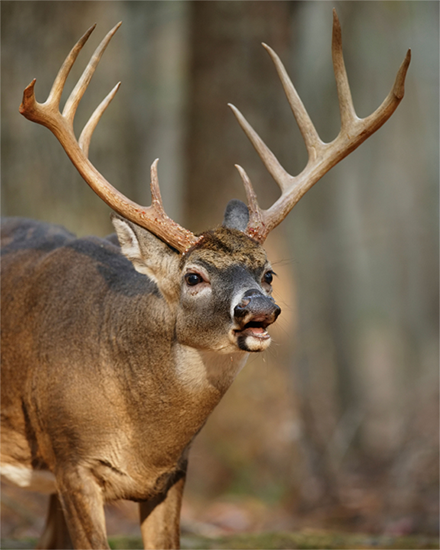Your Cart is Empty
FREE SHIPPING ON ORDERS OVER $100 -Excludes Shadow Hunter Blinds, USA Made Steel Tower System
FREE SHIPPING ON ORDERS OVER $100 -Excludes Shadow Hunter Blinds, USA Made Steel Tower System
FREE SHIPPING ON ORDERS OVER $100 -Excludes Shadow Hunter Blinds, USA Made Steel Tower System
FREE SHIPPING ON ORDERS OVER $100 -Excludes Shadow Hunter Blinds, USA Made Steel Tower System
October 22, 2021 4 min read

Although the exact equipment you need depends on the species you’ll hunt, local weather and environmental conditions, the weapons you prefer and your location, there are many staple items every professional hunter should always have at hand. Here are the top five essentials you should always have with you on every hunt.
A quality hunting knife can be one of the most versatile tools at your disposal. Yet, with so many different types, models and price ranges available, choosing the right knife for you can be as challenging as choosing the right guns, bows or ammunition. While you may occasionally use it to cut wood for making campfire kindling or open canned food, the primary purpose of a hunting knife is to cut and field dress hunting game.
Choose a full-tang fixed-blade knife instead of a folding model. Although fixed blades are less portable, they are also much simpler and more robust, possessing fewer mechanical points of failure. Match the knife’s length to the size of the animal you intend to hunt; the longer the blade, the better suited it is for cutting and skinning larger animals. Last, pay attention to your blade’s steel type. High-quality steel alloys, such as vanadium steel (e.g., S30V), stainless steel (154CM, 440C) or carbon steel (1095), are highly desirable for their durability and sharpness.
Shadow Hunter Elevators: Made to Build; Built to Last
Deer are crepuscular animals, so they are the most active at dawn and dusk. Under periods of intense hunting pressure, they may even temporarily become nocturnal. Due to the deer’s feeding and mating behaviors, you are most likely to see and shoot a deer under low-light conditions. A quality flashlight is the best way to avoid tracking and dressing the deer in the dark. Choose a model capable of producing 300 to 900 lumens: bright enough to let you see the deer clearly without turning into a searchlight, potentially spooking animals and disturbing other hunters.

If you are a beginner hunter, chances are you’ve asked, “What is a hunting blind, and what can I do with one?” Hunting blinds offer undeniable advantages to the deer hunter, including concealment, an improved vantage point and shelter in inclement weather for longer hunting sessions. Assuming you have brushed it in and allowed the local wildlife to get used to its presence,a quality ground blind keeps you hiddenbetter than any other hunting method. You can even select a hunting blind type that fits your preferences and hunting style.
If you like relocating often and need something lightweight and portable, theShadow Hunter GhostBlind is ideal. Its angled panels feature mirrored outer surfaces that reflect the surrounding environment perfectly, providing optimal camouflaging. When it’s time to change locations, you can fold it down and carry your blind in your backpack, making it ideal to stay on the move. You may prefer to use a more classic design to scout the perfect hunting spot, such as theShadow Hunter Marksman. With full flooring, a waterproof roof, and silent windows supporting guns and bows, this hunting blind lets you see without being seen in total comfort.

Shadow Hunter GhostBlind: 1 Blind; 1,000s of Camouflage Patterns
If you’re used to being outdoors, you know how easy it is to get minor cuts, scrapes or the occasional sprained ankle. A professional hunter should always keep a first aid kit appropriate for the location. Carrying first aid isn’t just about preparedness; it may mean the difference between life and death, either for you or a fellow hunter. An essential hunting first aid kit should contain the following:
Add items to adapt your first aid kit to local conditions and environments. For example, if you hunt in Alaska during the cold seasons, you may want to supplement this list with items such as a personal locator beacon, hand warmers and frostbite treatment essentials.
All professional deer hunters know how critical a good hunting rope is to a successful day in the field. You can use this versatile tool for a multitude of purposes, including:
When shopping for hunting rope, there is a huge variety of fibers and materials available. Prioritize outdoor ropes made of high-strength synthetic fibers, such as nylon (e.g., paracord), polyester or Kevlar. These materials have the durability required to drag animals and support heavy weights without snapping or abrading.
A critical part of professional hunting is preparedness: knowing what gear to bring and never leaving home under-equipped. At Shadow Hunter Blinds, we provide you with high-quality hunting blinds and accessories to ensure your hunting experience is as comfortable and practical as possible. Call us today at (888) 446-4868 for more information on our product lineup.